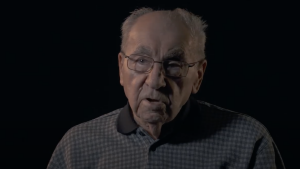Approximately 44,000 concentration camps and ghettos existed across Nazi-occupied Europe and North Africa during World War II. These incarceration sites, which Adolf Hitler used as a mechanism to terrorize and eliminate non-Aryan groups (those seen as “subhuman,” “useless eaters,” and not part of the pure, white, Germanic race), ranged from small barns to compounds with populations of a medium-sized city. These extensive networks of ghettos, transit camps, women’s camps, forced labor camps, and extermination camps, to name a few, played a central role in the Holocaust—the annihilation of six million Jews—as well as the mass murder of millions more Poles, Roma and Sinti, homosexuals, people with disabilities, social outcasts, Jehovah’s Witnesses, as well as other political and religious opponents. In addition to text, images, and artifacts, personal testimonies from local Holocaust survivors offer painful insights into these excruciating landscapes of degradation and dehumanization.

Click the Buttons Below to Explore the Exhibition
Exhibit Text
This exhibit includes six main sections, eight subsections, bibliographic sources, and various imagery from ghettos and concentration camps.
TextImages & Captions
An extensive collection of images and captions detailing prewar Nazi Germany, ghettos and concentration camps, liberation, and Displaced Persons camps.
ImagesExhibit Video & Multimedia
Holocaust survivors from the New York City area share memories from World War II, including antisemitism, mass arrests, deportations, life in the concentration camps, and liberation. Also listen to a podcast about how and why the exhibition was made.
MediaExhibit Map
Contemporary map of Europe showing the extent of Nazi German control in 1942 with select ghetto & concentration camp locations.
MapCharts & Statistics
Infographics that statistically analyze the Nazi system of 44,000 camps & ghettos across the European continent.
ChartsLibrary Study Guide
Explore research tools, writing prompts, reflection questions, recommended texts, thematic tie-ins, artifacts, vocabulary lists, instructor resources, and more.
Lib GuideAdditional Resources
Additional website with teaching modules, primary sources, and videos developed by Dr. Nikolaus Wachsmann, author of KL: A History of the Nazi Concentration Camps (2015).
ResourcesCatalogue
Explore exhibit text, images, maps, epilogue, bibliographic sources, and credits in catalogue form.
Catalogue
About the Exhibit
Cary Lane, Ph.D., the KHC Curator-in-Residence and Associate Professor of English at QCC led a diverse team of scholars, designers, videographers, as well as student fellows and interns.
AboutSupport
Please be advised that some of the exhibit’s historical pictures and descriptions may be disturbing to viewers. We encourage you to reach out to QCC’s Counseling Center and NYC Well for support.